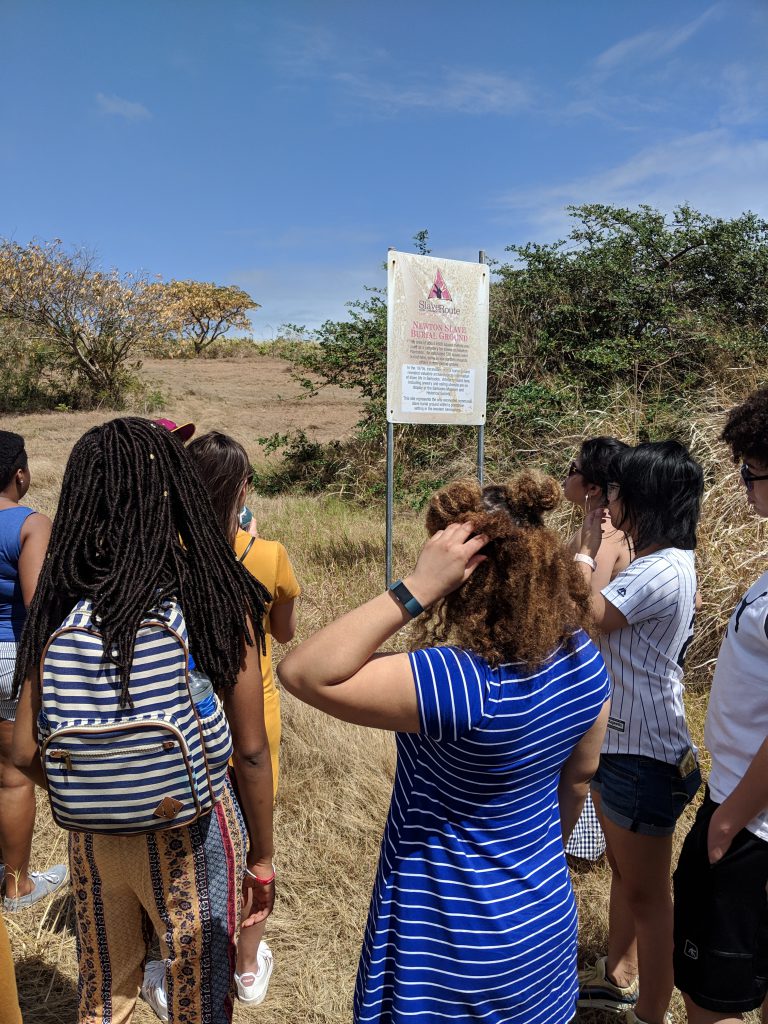After multiple class sessions introducing our archival and manuscript collections and oral history best practices, students in Dr. Nneka Dennie’s Spring 2019 AFR 329: Women & Slavery in the Black Atlantic course produced a documentary using oral histories created throughout the semester. These materials will be donated to the Archives.
In addition to this main project, students were tasked with identifying primary sources from local archives, historic sites, and/or repositories that shed light on the lived experiences of enslaved women or women enslavers. The following series of blog posts are authored by these students upon the completion of this archival research process and serve as reflective pieces.
Thank you for your submissions-and a wonderful semester of fruitful collaborations!
“Examining The Politics of The Archive”
written by Bry Reed
There are a few things you prepare for when going on a Spring Break trip: the lines at the airport, the long flight, the sunshine. When going on a Spring Trip to Barbados, however, to study the legacies of women and slavery on the island, you prepare yourself for a few additional things. Beyond the sunshine, I prepared myself to delve deeply into the brilliance of Bajan archival history. Before leaving Barbados, I would start to question the politics of archives themselves as institutions for their role in accessing information.

In visiting The Barbados Museum and Historical Society, I quickly realized that archival work is not a small feat. It is an expansive task of displaying the depth, wealth, and expansiveness of history. All the while connecting materials to an abundance of lived experiences, lineages, and legacies. While detailing the religious history of enslaved Black communities alongside white enslavers, the museum featured a red and orange gemstone recovered from Newton Plantation. The museum’s description of this stone explains that it allegedly belonged to a powerful enslaved woman at Newton who practiced “obeah” (a word synonymous with hoodoo).
The large stone intrigued me for its archival value and religious significance. I admired the choice by the Barbados Museum and Historical Society to acquire and display the object in the core exhibit. It is important that we as scholars recognize that the choices on acquiring materials and displaying them happen intentionally. It takes money, work, and dedication to shape history.
The presence of the stone in the Bajan national archive adds a mark of institutional legitimacy often not afforded to African and Caribbean religious practices. These modes of religious expressions suffer severe demonization across the African Diaspora that renders them “illegitimate”. The choice to display the obeah stone publicly combats silencing in the archive that stems from anti-Blackness and ongoing colonization of academic spaces. More broadly, making space to explore the role of obeah via the archives creates avenues for Black feminist scholars, like myself, to draw broader connections across disciplines and borders.
It is my hope that scholars interrogate the politics of the archives they explore. Who is represented within them? Who is silenced? Who is put on display? In answering these questions, we reconcile with the larger questions about access, silence, and colonization within the institution of archives themselves.

Speak Your Mind